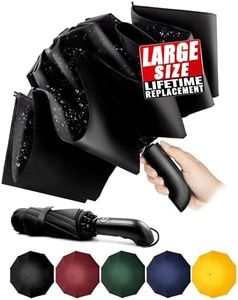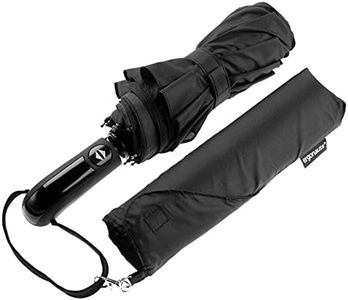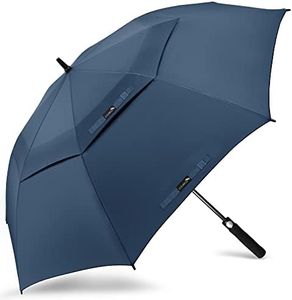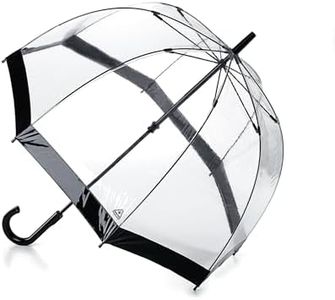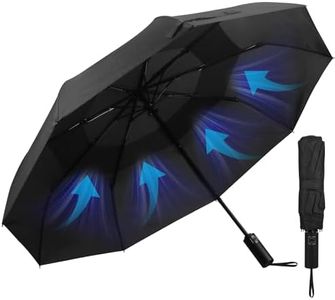We Use CookiesWe use cookies to enhance the security, performance,
functionality and for analytical and promotional activities. By continuing to browse this site you
are agreeing to our privacy policy
10 Best Windproof Umbrellas
From leading brands and best sellers available on the web.Buying Guide for the Best Windproof Umbrellas
When choosing a windproof umbrella, it's important to consider the specific features that will ensure durability and effectiveness in windy conditions. A good windproof umbrella should be able to withstand strong gusts without flipping inside out or breaking. Understanding the key specifications will help you select an umbrella that meets your needs, whether you're looking for something compact for travel or a larger model for maximum coverage.Canopy MaterialThe canopy material of an umbrella is crucial as it determines the umbrella's durability and resistance to wind. Common materials include polyester, nylon, and pongee. Polyester is durable and water-resistant, nylon is lightweight and quick-drying, while pongee is a high-quality, tightly woven fabric that offers excellent water resistance and durability. If you frequently face strong winds, opt for a canopy made from pongee or high-density polyester for better performance.
Frame ConstructionThe frame construction of an umbrella is what gives it strength and flexibility. Look for frames made from materials like fiberglass, steel, or aluminum. Fiberglass is lightweight and flexible, making it ideal for wind resistance as it can bend without breaking. Steel is strong but heavier, while aluminum is lightweight but less durable than fiberglass. If you need an umbrella for very windy conditions, a fiberglass frame is often the best choice.
Rib DesignRibs are the supports that hold the canopy open, and their design is key to an umbrella's windproof capabilities. Double-layered or vented canopies allow wind to pass through, reducing the risk of the umbrella flipping inside out. The number of ribs can also affect durability; more ribs generally mean better support. For high wind areas, choose an umbrella with a vented canopy and a higher number of ribs for added stability.
Size and PortabilityThe size of the umbrella affects both its coverage and portability. Larger umbrellas provide more coverage but can be cumbersome to carry, while compact umbrellas are easier to transport but may offer less protection. Consider where and how you plan to use the umbrella. If you need something for daily commuting, a compact, foldable model might be best. For outdoor events or long walks, a larger umbrella could be more suitable.
Handle DesignThe handle design impacts comfort and grip, especially in windy conditions. Handles can be straight, curved, or ergonomic. Ergonomic handles are designed to fit comfortably in your hand, providing a better grip. Rubberized or textured handles can also prevent slipping. If you often use your umbrella in strong winds, an ergonomic handle with a non-slip grip will offer the best control and comfort.





